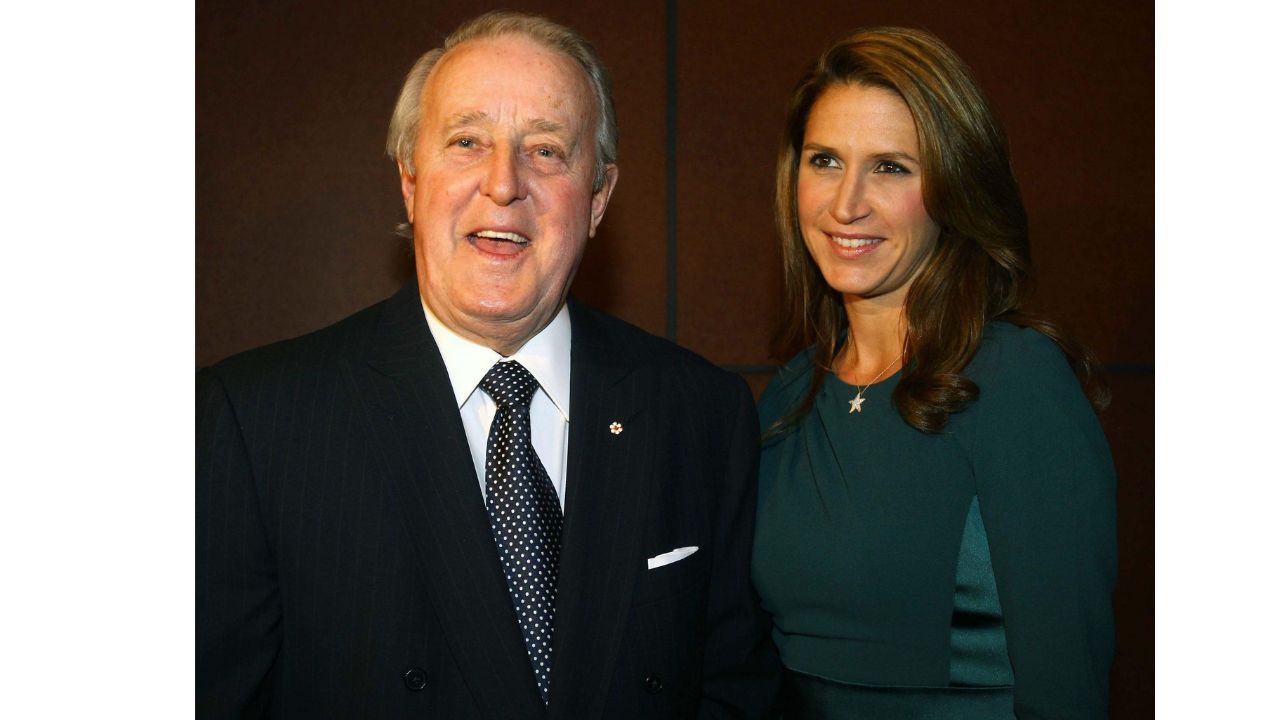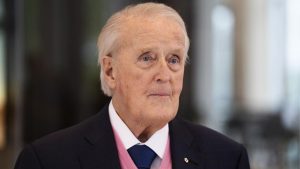The former prime minister of Canada, Brian Mulroney, has passed away. He was in charge of the deal that removed economic restrictions throughout North America. He was eighty-four.

Canadian Prime Minister Brian Mulroney Dies at 84:
Mulroney led the Progressive Conservative Party from 1983 to 1993. He was elected in 1984 with 211 of 282 seats, the most significant majority in Canadian history, and served as prime minister for over ten years.
Former Canadian prime minister Brian Mulroney passed away on Thursday. Through a comprehensive free trade deal that was initially decried but is now praised, he developed strong relationships with two Republican US presidents. He was eighty-four.
Caroline Mulroney, the daughter of the nation’s 18th prime minister, wrote in a post on X that her father passed away quietly and surrounded by family. Mulroney’s family said last summer that he was doing better every day following treatment for prostate cancer in early 2023, which was followed by a cardiac operation. According to a family spokeswoman, Mulroney passed away while receiving treatment at a hospital in Palm Beach, Florida, following a recent fall.
Mulroney led the Progressive Conservative Party from 1983 to 1993. He was elected in 1984 with 211 of 282 seats, the most significant majority in Canadian history, and served as prime minister for over ten years.
With the victory, Canada would have its first majority Conservative government in 26 years. In 1988, his administration was reelected. Mulroney had broad support when he took office, but when he departed, his approval rating was the lowest in Canadian history. Not long after he left government, his Progressive Conservative party suffered a crushing loss. But prime ministers consulted him in the years following the defeat.
Leader of the Liberal Party, Justin Trudeau, remarked, “He had the guts to do big things.” He not only molded our history but also our present and will continue to affect our future. He was a remarkable politician and will be missed.
Stronger ties between the US and Canada were strongly supported by the man, who was well-known for his charisma and Irish blarney or talent for gab. His slickness with US President Ronald Reagan played a significant role in his efforts to advance a free trade agreement.
The Mulroney-Reagan duet, “When Irish Eyes Are Smiling,” extensively televised during his rule in Quebec City in 1985, is remembered by many Canadians. It was titled for the pair’s Irish ancestry and that their meeting coincided with St. Patrick’s Day. Future free trade negotiations between the two nations are now possible thanks to the 24-hour summit.
Mulroney has a devoted following of fellow conservative Margaret Thatcher in addition to George H.W. Bush, the previous president.
Reagan and Bush Friendship:
Mulroney spoke during Bush’s state funeral, providing a eulogy. In 2004, he extolled Reagan as well. When Mulroney, Reagan, and Bush led their nations in the international arena during the final ten years of the Cold War, they grew close—Bush’s four years in office coincided with Mulroney’s nine.
Mulroney’s cordial rapport with his colleagues in the South played a significant role in developing the free-trade agreement, which was a contentious agreement at the time. The trade agreement caused substantial increases in north-south commerce and a long-term reconfiguration of the Canadian economy. Canada is among the nations that depend on commerce the most globally. Over 75% of Canada’s exports are sent to the United States.
Canadian Conservative leader Pierre Poilievre stated, “He unleashed free enterprise, crushed inflation, restored fiscal sanity, and concluded one of the greatest free trade agreements the world has ever seen.”
He actively supported freedom and Western allies against communism on the international scene. He was among the earliest and most vociferous to oppose South Africa’s apartheid regime and support Nelson Mandela’s cause.
But scandals beset Mulroney’s government, and his almost ten-year tenure as prime minister ended in 1993 when voters handed his Progressive Conservative Party a crushing electoral loss, leaving it with only two seats in the 295-member House of Commons. He departed just before the election’s outcome.
The loss coincided with a general dissatisfaction with Canada’s weak economy. Canadians held Mulroney accountable for a three-year recession that resulted in a record number of jobless or bankrupt individuals.
After more than a century of tariff protection, he oversaw the passage of the 1988 U.S.-Canada Free Trade Agreement and the widely criticized 7% sales tax. Later, in 1994, the deal was expanded to include Mexico, becoming the North American Free Trade Deal.
According to a statement from the American ambassador to Canada, David Cohen, “Prime Minister Mulroney’s important role in creating the North America Free Trade Agreement laid the basis for decades of economic integration and mutual prosperity between the United States and Canada.”
Following his first term, Mulroney, the half-Irish “boy from Baie-Comeau” (a tiny village in the French-speaking province), who was born in Quebec, vigorously campaigned on the trade deal.
However, many voters were against the pact because they thought it would compromise Canadian sovereignty. Critics attributed Canada’s increasing unemployment in the late 1980s and early 1990s to things like companies relocating abroad to avoid paying more taxes and labor expenses in Canada.
Although Mulroney was criticized for the free trade agreement in office, former Conservative prime minister Stephen Harper claimed history would remember him leading Canada to previously unheard-of levels of wealth and economic growth.
Mulroney’s inability to unite the nation’s divided provinces and appease French-speaking Quebec’s demand for special constitutional status further irritated Canadians, ultimately resulting in a vote on Quebec secession following his departure from government. In a close vote, the separatists in Quebec lost.
He contributed to the conservative party’s rebirth. Before him, it did not exist in Quebec, according to former prime minister Jean Chrétien.
Who was Brian Mulroney?
On March 20, 1939, Mulroney was born in the isolated smelting town of Baie-Comeau on Quebec’s North Shore. The town mill belonged to Americans. Mulroney grew up believing that his father and the other Baie-Comeau households would benefit from American investment through jobs.
After being employed as a labor lawyer by the biggest legal company in Montreal, he became president of the Iron Ore Company of Canada, a division of Hanna Mining, which is situated in Cleveland.
He first saw Mila Pivnicki in a bikini at the Mount Royal Tennis Club 1972. At fourteen, she was his junior. When she was nineteen, she would marry him. Wife Mila and four children, Caroline, Ben, Mark, and Nicolas, are left behind by Mulroney.
Who is Brian Mulroney’s wife, Mila?
In 1973, at age 34, former Canadian prime minister Brian Mulroney wed Mila Mulroney, who was 19 at the time. She was born Milica Pivnički and is a Serbian-Canadian doctor’s daughter. Mila stayed home and cared for the family while her husband ran for prime minister. Her popularity among Canadians increased as a result, as many voters identified with her.
From 1984 to 1993, Mulroney advocated for many children’s organizations during her tenure as prime minister. But she was also criticized for her opulent lifestyle and frequent shopping binges during this period.
Do Brian and Mila Mulroney have kids?
Brian Mulroney leaves behind his spouse and four kids. Ben, Mark, and Nicolas Mulroney were the couple’s three boys; they also had one daughter. Caroline Mulroney, the oldest child of Brian and Mila Mulroney, revealed the former prime minister’s demise on X, previously Twitter.
She said, “On behalf of my mother and our family, it is with great sadness we announce the passing of my father, The Right Honourable Brian Mulroney, Canada’s 18th Prime Minister.” “He passed away peacefully, surrounded by family,” the message said.
Read Also – Harold Wiener Cause of Death? Explore More Details About his Death


